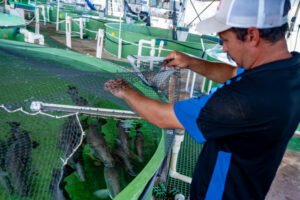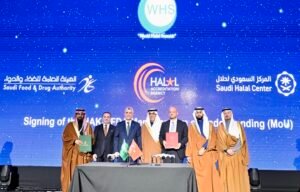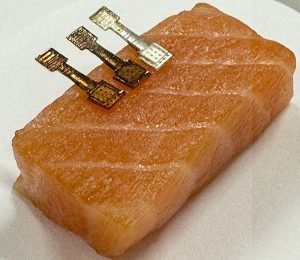Wednesday, 17 December 2025
From innovation to impact: SIG’s vision for sustainable, aluminium-free packaging
Stefan Mergel, Head of Sustainability & Digital Marketing at SIG As global demand increases for more sustainable and low-carbon packaging solutions, SIG, a leading provider of systems and solutions for…

Stefan Mergel, Head of Sustainability & Digital Marketing at SIG
As global demand increases for more sustainable and low-carbon packaging solutions, SIG, a leading provider of systems and solutions for aseptic packaging, is continuing to innovate. In a significant advancement for the industry, SIG has launched SIG Terra Alu-free + Full Barrier, the world’s first aseptic carton that is free from aluminium layers, designed for both small and multi-serve formats that require full barrier protection.
This new solution offers the same 12-month shelf life and protection as traditional aluminium-based cartons while achieving a notable 29 per cent reduction in carbon footprint compared to standard multi-serve alternatives.
In an interview with NUFFOODS Spectrum, Stefan Mergel, Head of Sustainability & Digital Marketing at SIG, discussed the motivations behind this breakthrough, the technical advancements that make it possible, and how this innovation aligns with SIG’s broader goal of developing a regenerative, paper-based packaging system.
What were the key motivations behind developing the SIG Terra Alu-free + Full barrier material for aseptic cartons, especially in a multi-serve format?
At SIG, sustainability is integral to our business, and we strive to create a regenerative food packaging system. SIG Terra is our marker for sustainable packaging innovations, which we constantly evolve for the better. Leveraging our R&D expertise and unique filling technology, we achieved a track record of industry-firsts in simplifying structures and reducing the weight of packaging, with milestones including the world’s first aluminium-free aseptic carton in 2010 – developed for plain liquid dairy products.
Drawing on our extensive knowledge and experience with alu-layer-free structures and building on the success of SIG Terra Alu-free, we have continued to grow our aluminium-layer-free aseptic carton portfolio – with every solution reducing the already low carbon footprint of standard SIG aseptic cartons even further. With SIG Terra Alu-free + Full barrier, we expanded the alu layer-free options for wider use with oxygen-sensitive products such as fruit juices, nectars, flavoured milk or plant-based beverages. We aim to roll out SIG Terra Alu-free + Full barrier to all flagship aseptic carton formats, both small-size and multi-serve, suitable for all beverage and dairy categories, step by step.
We plan to create an alu-layer-free, full barrier aseptic carton made with at least 90% paper content, including the closure, by 2030, aiming to improve renewability, further reduce carbon emissions, and streamline the recycling process of aseptic cartons by requiring only the separation of paperboard and polymers.
Could you explain the technical advancements that enable this alu-free material to maintain full barrier protection and a shelf life equivalent to traditional aluminium-based cartons?
SIG Terra Alu-free + Full barrier is a huge step forward in the push to decarbonise the food and beverage industry. By removing the aluminium layer – traditionally used to protect oxygen-sensitive products like juice, plant-based drinks, or flavoured milk – SIG has reduced the number of raw materials used for the full barrier aseptic carton from 3 to 2.
It is made of over 80% paper (excluding closure) and ultra-thin polymer barriers, that protect against oxygen, light, moisture and aroma loss. It delivers the same 12-month products shelf life and product protection as standard full-barrier materials, which use aluminium as a protective layer, while significantly reducing the carbon footprint. Despite accounting for just 5% of standard aseptic carton packaging, aluminium contributes around 25% of its carbon footprint. Removing it represents a major gain for environmental performance.
Beyond sustainability, what are the key benefits of the SIG Terra Alu-free + Full barrier packaging for consumers, brands, and retailers?
• Full shelf life of up to 12 months
• “Plug-in” solution running on installed SIG filler base
• Full performance of up to 24,000 packs per hour on SIG filling lines for small-size cartons and 15,000 packs per hour for multi-serve cartons
• Available at scale to customers around the world
How significant is the 29% reduction in carbon footprint compared to standard multi-serve cartons, and what role does this innovation play in SIG’s broader sustainability goals?
Building on our deep expertise with aluminum-layer-free structures and the success of SIG Terra Alu-free, we have continued to expand our portfolio of alu-free aseptic cartons—each innovation further lowering the already minimal carbon footprint of standard SIG cartons. With the introduction of SIG Terra Alu-free + Full barrier, we’ve extended these sustainable options to include oxygen-sensitive products such as fruit juices, nectars, flavored milk, and plant-based beverages. Our goal is to gradually roll out this solution across all key aseptic carton formats both small-size and multi-serve to serve the full range of beverage and dairy categories.
How seamless is the transition for manufacturers currently using SIG filling lines? Are there any cost or operational considerations they should be aware of?
SIG Terra Alu-free + Full barrier can seamlessly run on existing SIG carton filling lines with full performance including high-speed of up to 24,000 packs per hour on SIG filling lines for small-size cartons and up to 15,000 packs per hour on filling lines for multi-serve cartons with only minor, low-cost adaptations.
Looking ahead, how does this innovation align with SIG’s long-term strategy to increase paper content and move toward a more regenerative food packaging system?
By 2030, we aim to develop an aluminium-layer-free, full-barrier aseptic carton composed of at least 90 per cent paper content, including the closure. This initiative is designed to enhance renewability, significantly lower carbon emissions, and simplify the recycling process by requiring only the separation of paperboard from polymers.
Shraddha Warde
shraddha.warde@mmactiv.com
Technology
Nfinite secures funding to scale up breakthrough paper packaging solution
Dec 17, 2025 | Company News
Silal–Square Roots partnership uses AI to boost sustainable food production
Dec 17, 2025 | Company News
Food Testing
Australia’s Humpty Doo Barramundi farm to achieve ASC certification
Dec 08, 2025 | Australia
SFDA and Turkish Halal Accreditation Agency forge strategic partnership
Dec 05, 2025 | Food
Fish freshness easily monitored with a new sensor
Dec 04, 2025 | Food Safety and Testing
More Popular
Nfinite secures funding to scale up breakthrough paper packaging solution
Dec 17, 2025 | Company News
Silal–Square Roots partnership uses AI to boost sustainable food production
Dec 17, 2025 | Company News
Korea's Samson Food broadens seafood portfolio with hwangto salt-based products
Dec 17, 2025 | Company News






